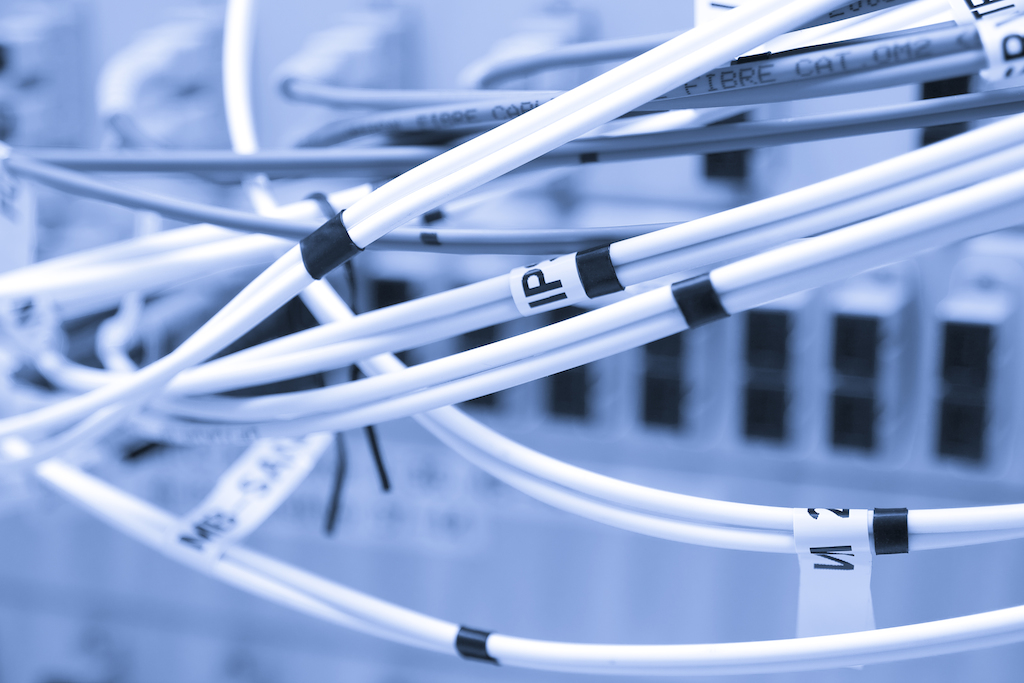801-505-0700
Dedicated Servers From H&D LLC

Dedicated Servers. How Much Power do you Need?
We provide you with a complete machine, including full usability over your hardware.
It is based in our data centre for your security, but you have exclusive use of it and never need to share it or any of the available resources (in the form of RAM, CPU, web space and much more) with other users.
Go ahead: with root access, full administrator privileges and your own static IP address, you can use your dedicated server to do exactly what you want according to your individual requirements
Your dedicated server should be perfectly tailored to suit you and your project. This is why you have a choice between SATA and SSD storage media.
The more innovative SSD technology, without any mechanical components, provides considerable added performance while costing just a few cents extra. However, the small premium is often more than worth it. If the highest possible IOPS performance is important to you, then a dedicated server with an SSD hard drive will definitely put you ahead of the game.
Intel® Core™ E3-1225v3
4 cores, 8 threads, 3.2Ghz
- 32 GB DDR4 RAM ECC
- 2 X 2TB SATA III HDD
- 1 IP (4 total $6)
- 1 Gbit/s
Intel® Skylake i7-6700
4 cores, 8 threads, 3.4Ghz
- 64 GB DDR4 RAM
- 2 X 1TB SSD
- 1 IP (4 total $6)
- 1 Gbit/s
Intel® Core™ i7-9700
8 cores, 16 threads 3 Ghz WINDOWS 2019
- 64GB DDR4 RAM
- 2 X 1TB NVMe SSD
- 1 IP (8 total $14)
- 1 Gbit/s
Our Dedicated Servers:
Affordable. Fast. Secure.
Our comprehensive suite of professionals caters to a diverse team, ranging from seasoned technicians to DC engineers.
Ready in 24 hours
Order your new dedicated server now and get up and running usually in 24 hours.
Bargain prices
There is no better choice for dedicated hosting: great rates closely calculated to your advantage – and definitely no hidden costs. Compare it!
Two data centers
You select your server location between Strasbourg/France or St. Louis, MO in the USA. Both data centers are highly-modern, highly secure, independently audited and certified.
Essential features
Whether it is control panel, operating system or services: everything is included in our server packages so you can start your project immediately.

Full performance for your project
A dedicated server is just the thing for you if a lot of resources are required on a permanent basis, such as for complex, dynamic sites, online shops, VPNs or it as a game or database server. Are static web projects not your thing?
Have you put your heart and soul into creating an extensive website full of sophisticated visual effects? Or do you expect a lot of simultaneous access? Should your server be able to easily handle a high volume of database queries and CPU-heavy processes? Then lease a dedicated server and pay particular attention to the processing power, the number of processor cores and memory equipment, because these factors will determine the speed of your system.
STAYING SECURE WITH FULLY MANAGED DEDICATED SERVERS
A One Solution Fix
Does Not Solve All Security Threats
Malware is more sophisticated than ever to gain access to and disrupt systems
A recent study carried out by ISACA revealed a stunning figure. 92% of enterprises surveyed said that persistent advanced threats are a serious ongoing issue for them. This also can include targeting specific employees of a company who retain a lot of information. Therefore hackers would like to steal this information to assist in their efforts. Online businesses are not the only things that are being targeted but also the individuals. One of the reasons is that there are more of them than one single company. There are always a few employees that are the company’s weakest point when it comes to security and defending against outside (or even inside) attacks. Therefore, malware is able to target individuals, especially those who are not kept up to date on routine security measures and habits. 40% of enterprises also say security training and methods to defend against attacks is not part of their routine.
Whatever device is least secured is the easiest point of entry for an attacker or malware.
Since BYOD’s are gaining in popularity this is cause for concerns in regards to security. Even having a different frame or state of mind when checking (phishing) emails may put one’s guard down. Employees can become less vigilant since they are using a different device or using that same device in a non-work environment. Even if a mail server is secured in some shape or form should not mean that is it’s only means of defense. Having a false sense of security can be a serious issue. Each individual’s knowledge of security should be accounted for and relied upon to some extent, regardless of what hardware or software security is doing. A human being’s “gut feeling” can even be a better-safe-than-sorry defense. Therfore, blindly accepting what security software is telling them is not always bullet-proof.
The Morris worm was able to spread rapidly and exploit the many computers connected via ARPAnet. This then infected thousands of machines in a very short time. Since the Internet and the Internet of Things are so interconnected, security breaches can spread even more rapidly. However, it can also spread very rapidly the same way in how to actually stop and fix the exploit. Staying up to date on anti-virus and malware software is essential. This software must be updated and maintained 24/7 or it will quickly become useless. Now, of course, getting infected is as easy as opening an email attachment or even clicking on a link from within the email message.
The malware that does the most harm are the ones that remain undetected.
Malware, and now advanced malware is becoming more complicated in its ways to gain access to a system. The most damaging malware is stealthy and able to adapt to its target, environment, and behavior. Malware is no longer seeking to attack or cause harm to a large number of targets all at one time. In many instances, advanced malware can be designed to help carry out a single specific goal. Targeted malware does not always just cause a single large destructive event as malware in the past has done.
The numerous defenses required to thwart these endless attacks and keeping up with the ever-evolving and adapting threats may be out of reach of many online businesses. Implementing hardware solutions or finding a provider that offers all of the security required in today’s sometimes ominous Internet may not even be possible, especially on a limited budget.
SaaS may be a good compromise to at the very least prevent attackers from spending much time at all on a well-defended target. They will move on (best case scenario) or simply block numerous attempts at infecting fully managed dedicated servers with malware or viruses. Less well-defended sites are easier targets and more attractive to attackers than well-defended sites. (Unfortunately, some still like a challenge, however…) As a result, many SaaS providers in the security field provide “badges” to display on websites as a deterrent, (theoretically). IDC’s FutureScape: Worldwide Security 2015 Web Conference says SaaS is going to own a larger share of corporate security spending. This can certainly include small personal websites to businesses with a strong online presence.
Layered protection is strongly recommended, such as DDoS protection at a data center’s network level to specific server level malware protection, hardware/software firewalls, secured and updated apps, scripts & software, log monitoringto determine where attacks may be coming from and even predicting risks of future attacks or threats. Especially relevant, analyzing risk is always beneficial to security spending. This should also include vulnerability scanning.
It is not recommended to seek a one solution fix to help solve a variety of security threats.
According to a report from Software Advice, 66% of businesses are afraid that they could become victims of cybercrime. Even more startling, 21% of those surveyed did not think their data was well secured. Malware, hackers, and viruses can easily find this out.
Furthermore, even home-based and office computers running Macs are no longer safe. Having a false sense of security can be just as damaging as inadequate software and hardware defenses in place. Humans in their day to day business tasks need to remain vigilant and aware of possible threats in a way so that it becomes second nature to question what is happening in a dedicated server or office computer that is considered or labeled “unusual activity”, why software is being installed or if a system is compromised what is the Incident Response Plan. Software Advice’s report revealed that 27% of businesses are not even sure if they have an IRP. 17% say they are not even necessary.
A hosting provider should offer some form of security at the Datacenter and at least an option for added security. This can come in the form of either via hardware or software which is sometimes described as Value Added Services and/or SaaS. If unsure, ask the provider. It’s fine for a dedicated server provider to not offer absolutely everything. There should, however, be for meeting security and data integrity goals from third-party services or being provided a custom solution/quote.
HostingAndDesigns.com is a 2015 Sector Performance and 2017 Soft Tech awarded provider.